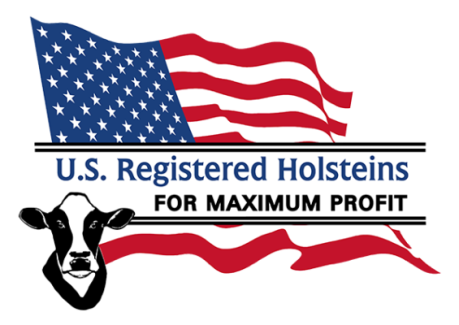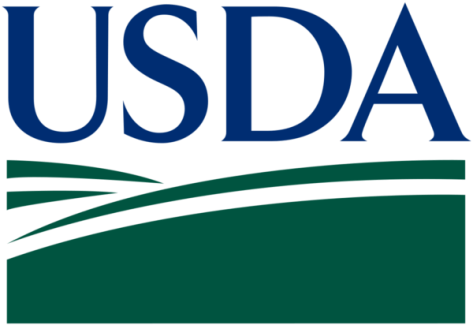Milk prices will end the year a little higher than what was forecasted back in November. On the CME 40-pound cheddar blocks were $1.81 per pound early November but by mid-November it had fallen to $1.66. But prices started to rally after that reaching $1.9475 per pound only to fall back to now at $1.86.
 Cheddar barrels were $1.75 per pound early November and had fallen to $1.445 mid-November. It rallied reaching $1.6925 per pound early December, but it also has fallen to $1.625. Dry whey also showed strength going from $0.64 per pound early November to now $0.73.
Cheddar barrels were $1.75 per pound early November and had fallen to $1.445 mid-November. It rallied reaching $1.6925 per pound early December, but it also has fallen to $1.625. Dry whey also showed strength going from $0.64 per pound early November to now $0.73.
This price strength pushed Class III from $17.83 in October to $18.03 in November and December will be near $18.50. For the year Class III will average about $17.10 compared to $18.25 for 2020.
Butter ranged from $1.93 to $2.05 per pound in November and has been above $2.00 per pound in December being as high as $2.12. Nonfat dry milk was $1.55 to $1.57 per pound in November and has increased to $1.6775.
Class IV was $17.04 in October, $18.79 in November and will be near $!9.75 for December. Class IV will average about $16.08 for the year compared to $13.49 in 2021.
Fluid milk sales down
Fluid (beverage) milk sales have been below a year ago. January through October sales were 5.2% lower. This decline is attributable to the fact that in 2020 there were more at home meals. But higher milk prices are in response to good butter and cheese sales, strong exports of butter, cheese, whey products and nonfat dry milk/skim milk powder.
Dairy export volume January through October on a milk solids equivalent basis was 11% higher than a year ago. October exports of cheese and butter were particularly strong being respectively 43.7% and 107.1% higher than a year ago.
But much of the strength in milk prices is due to a slowdown in milk production. Milk production from January through July was 2.7% higher than a year ago but has slowed since. August milk production was up just 0.6% higher than a year ago, even with a year ago in September, up just 0.1% in October and 0.4% below a year ago in October.
Slowdown in production
The slowdown in milk production is due to declining milk cow numbers and below average increase in milk per cow. Since peaking in May milk cow numbers had fallen 122,000 by November. November cow numbers were 47,000 below a year ago, down 0.4%.
Milk per cow was just 0.2% higher in November than a year ago. Declining cow numbers and little increase in milk per cow are attributed to tighter forage supplies in many states and much higher feed costs encouraging producers to increase culling of milk cows.
South Dakota continues with a relatively high increase in milk production with November up 16.7% from a year ago with 22,000 more milk cows. November milk production was up 2.8% in Texas, 2.7% in Iowa, 2.2% in Wisconsin, 1.9% in Minnesota, but just 1.0% in California and 0.4% in Idaho.
New Mexico’s milk production was down 13.2% with 29,000 fewer cows. Indiana earlier in the year was experiencing relatively strong increase in milk production but November production was down 1.7% with 5,000 fewer cows. Some other states experiencing declines in milk production were Pennsylvania 3.5%, Florida 3.4%, Arizona 3.1%, and New York 0.2%.
Higher milk prices on forecast for 2022
As of now 2022 is shaping up for much higher milk prices. Milk production is forecasted to increase by less than one percent. Milk cow numbers are expected continue to decline at least through the first half of the year as dairy producers reduce cow numbers in response to tighter margins from higher feed costs, higher cost other inputs and labor shortages.
Higher feed cost may also reduce an increase in milk per cow. An increase in milk production at this rather low level will support much higher milk prices.
The economy is expected to continue growth next year but at a slower pace. While fluid milk sales will likely continue a downward trend butter and cheese sales are expected to show continued growth.
But there is uncertainty in sales due to inflation that has increased the cost of food, gasoline, the cost to heat the home and most everything else. That will reduce consumer spending power which could reduce going to restaurants and in store purchases of dairy products. And hopefully COVID and the new variant Omicron doesn’t result in more restrictions on restaurants, closing of schools and public events.
World milk production shows modest growth
The world economy is showing continued recovery. World milk production is showing modest growth of less than one percent. Milk production in leading exporters like the EU-27, the UK and New Zealand has been running below a year ago or up just slightly.
his will leave opportunities for U.S. dairy exports. World dairy product prices have increased leaving U.S. dairy products price competitive on the word market. There is some uncertainty as to whether COVID will cause a shut down in restaurants and tourism in some of U.S. export markets reducing their imports of dairy products.
Port congestions and related issue also continue to challenge dairy exports.
Dairy futures overly optimistic
With modest increase in milk production, continued growth in domestic dairy product sales, and continued growth in dairy exports forecasts are for much higher milk prices in 2022.
Currently, dairy futures are overly optimistic with Class III in the $19’s all of 2020 and Class IV in the $20’s. The latest USDA’s price forecast was not as optimistic with Class III averaging $18.15 for the year and Class IV averaging $19.00.
Class III and IV at least in the $18’s seems reasonable. It will take time for dairy producers to increase milk cow numbers, but with much higher milk prices producers may reduce culling of milk cows and feed more protein and concentrate for higher milk per cow. So, milk production could show some strength by the second half of the year lowering milk prices some.
It seems like every year there are surprises that result in milk prices ending up different than forecasted. These higher milk prices are not guaranteed. So dairy producers may wish to use dairy futures and options, the Revenue Protection Program, LGM-Dairy or contracting with their milk buyer to protect their future milk prices.
And signing up for the Dairy Margin Protection program at the $9.50 protected margin levels is strongly encouraged.
Source: Wisconsin State Farmer




